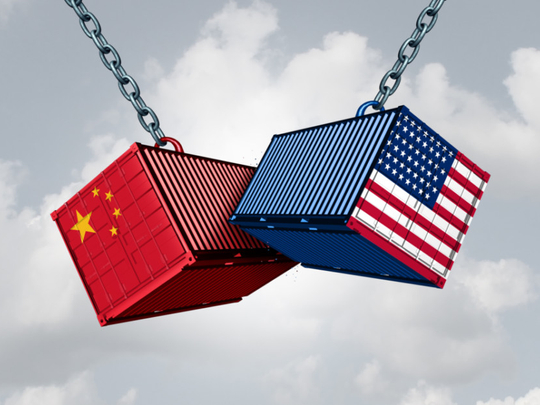
Every country wants its exports to be more than imports so that domestic companies can become dominant and generate high employment.
China has the same goal and has been running an export surplus with US. This has put the US manufacturing industry under some pressure, with the US saying it loses more than $300 billion a year in trade with China.
To promote best trading practices, the World Trade Organisation was established in 1995 and the US strongly supported free trade. In the late 20th century, the US had a great interest in China because it was one of the fastest growing markets for US goods and services. China was made a member of the WTO in 2001 on the condition that it will reform tariff policies, including import tax reductions, and open up markets.
China got access to overseas markets and US and European companies started setting up manufacturing shops in China. “Made in China” products flooded the US as exports increased manyfold through ultra-supportive government policies. American consumers liked this scenario as they could buy more stuff with the same wages.
Most of these products were in fact made by multinationals working in China because of the huge gap in labour costs, which in the US are $15 an hour as compared to $2 in China.
The US had originally thought that China will export low value products and the US in turn would export high-tech, high-value products. They hoped to focus on cutting-edge industries and create better technology based jobs in US in place of low value manufacturing jobs.
But the tables turned. The US tolerated the trade imbalance because US companies were decades’ ahead in terms of technology and manufacturing capabilities and the US saw no real threat to its global dominance. However, things started changing fast.
China focused on its domestic technology companies and helped them become world-class. They have been providing huge subsidies to Chinese tech and manufacturing companies and creating the likes of Lenovo, Huawei and ZTE.
At the same time, China intentionally has one of the worst intellectual property legislations, which means if global companies wanted to access cheap Chinese labour and manufacturing costs, they would have to share their technology and trade secrets with China.
For now, the US is the most technologically advanced economy in the world and it would not want to lose out on its competitive advantage. President Donald Trump accused China in March of stealing intellectual property by forcing US companies to share their most valuable secrets and sign joint venture agreements with local firms if they want to operate in China.
The US-China Economic and Security Review Commission said in its most recent report that China “has closed the technology gap” with the US in quantum information science, a sector Americans had long dominated.
At stake here are the industries of the future. Artificial intelligence, robotics and quantum computing. What’s at stake is not just economic prosperity but also world domination. Because many of these industries of the future have profound military implications.
In 2017, growth in domestic consumption was responsible for 58.8 per cent of China’s economic growth and retail sales reached the same levels as the US. Net exports of goods and services made up only 9.1 per cent of last year’s growth. China has long since gone past the stage where exports are responsible for most of the growth.
However, that is only one side of the story. Nearly 20 per cent of China’s exports head for the US (about $500 billion). If a trade war ensues, China’s GDP growth would drop 0.5 per cent and could continue to fall as things heat up.
Yet, the Chinese market is huge and the profit contribution of the Chinese market are significant enough for companies like GM, Ford, Boeing, DuPont, Starbucks, Coca Cola, Walmart, Intel, Apple, etc, to really feel the pain. From 2010-17, GM sold more cars and trucks per year in China than it did in the US.
Boeing delivered 202 planes to China in 2017 — or 26 per cent of its global total.
China is also the largest importers of American agriculture products. Tariffs on soybeans would have a huge impact on US farmers and Trump is not going to jeopardise $14 billion of soybean exports that come from solid “red states” like Indiana, Iowa, Kansas and Nebraska.
China is going to have to get serious about proper handling of intellectual property, and Trump is trying to impress that upon them. What needs to happen is for the US and China to agree on a bilateral trade agreement to stop dumping, while still allowing China to slowly transform to a market economy.
Prasanth Manghat is CEO of NMC Health.












